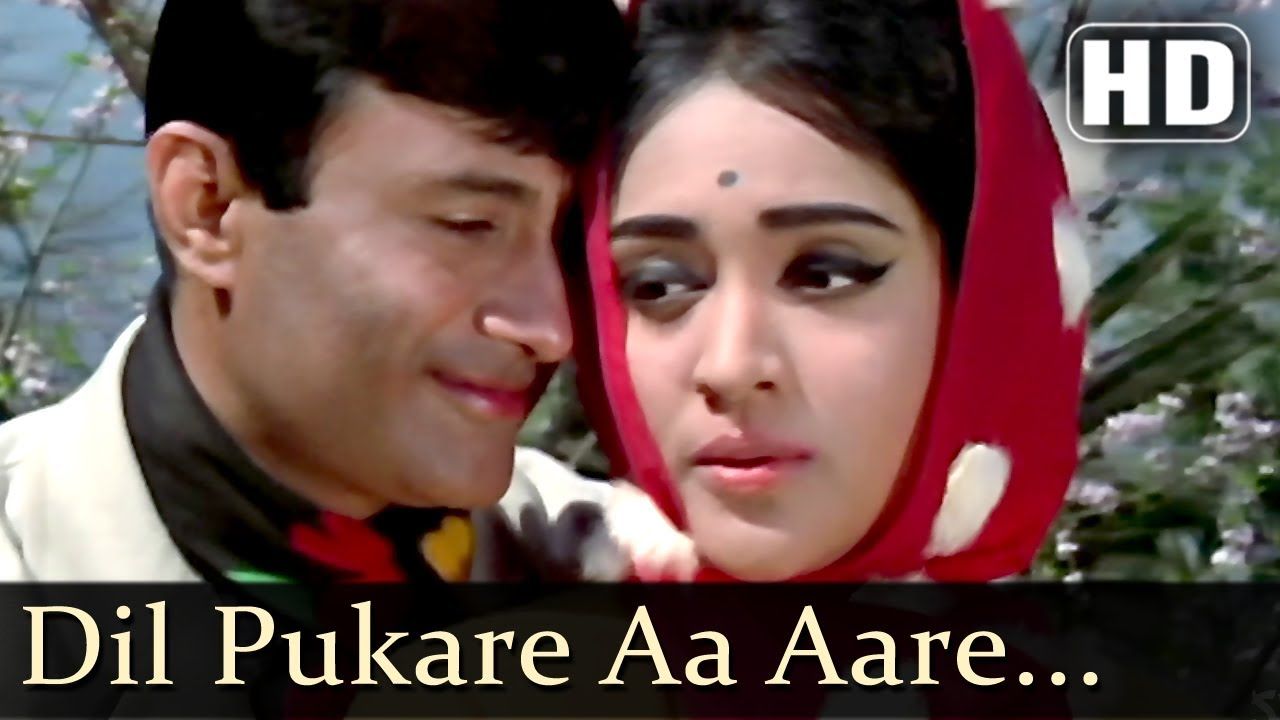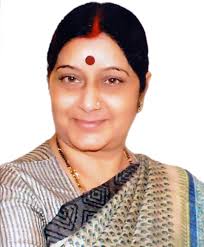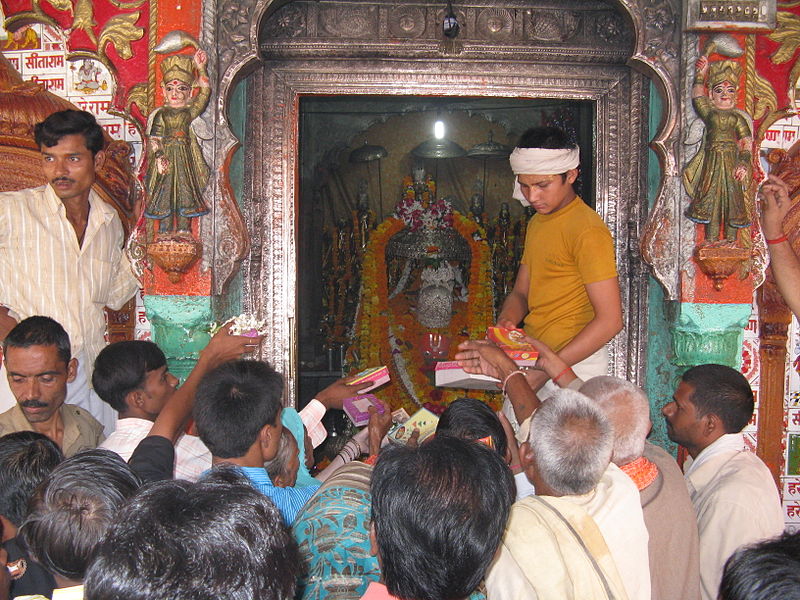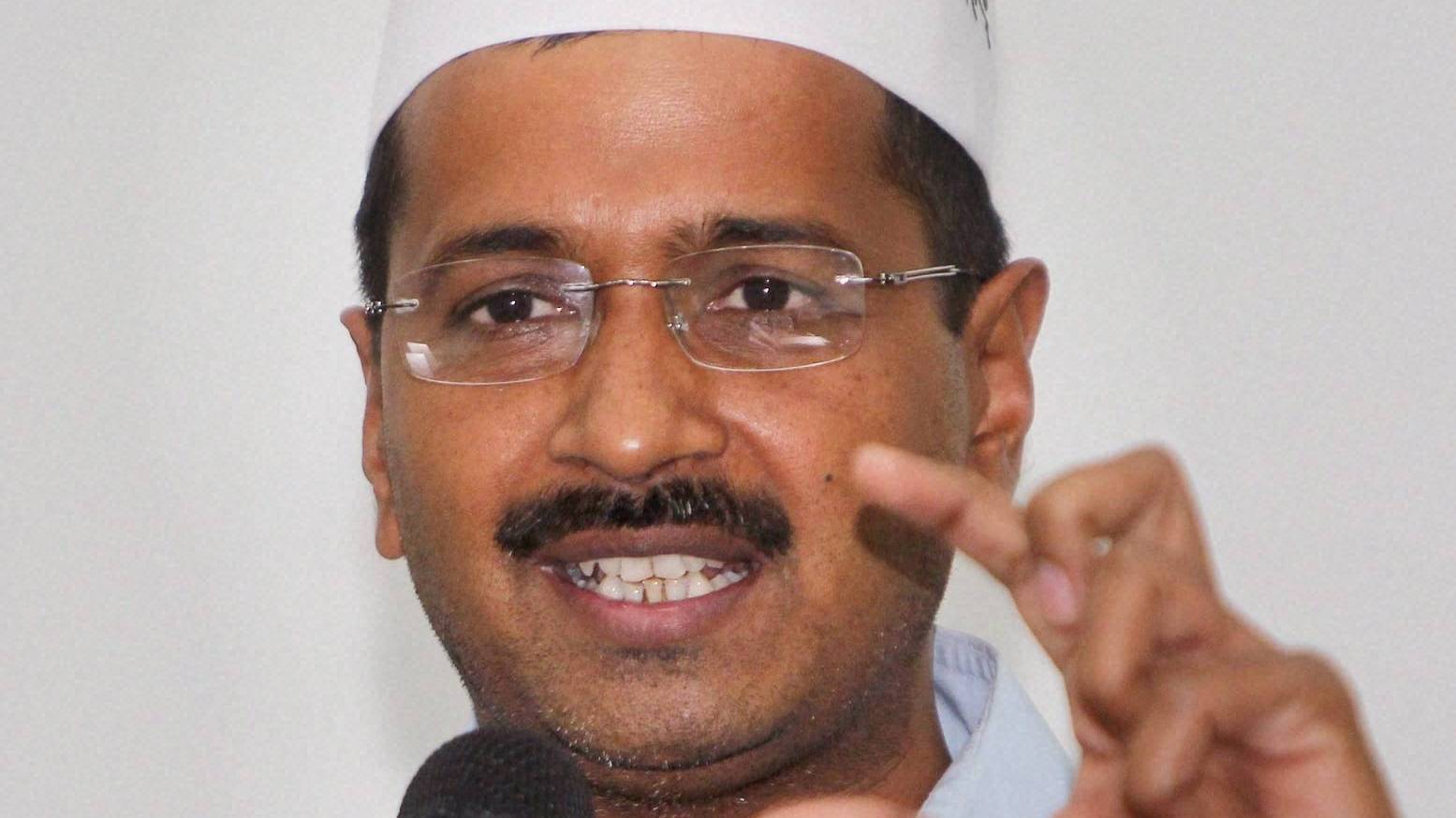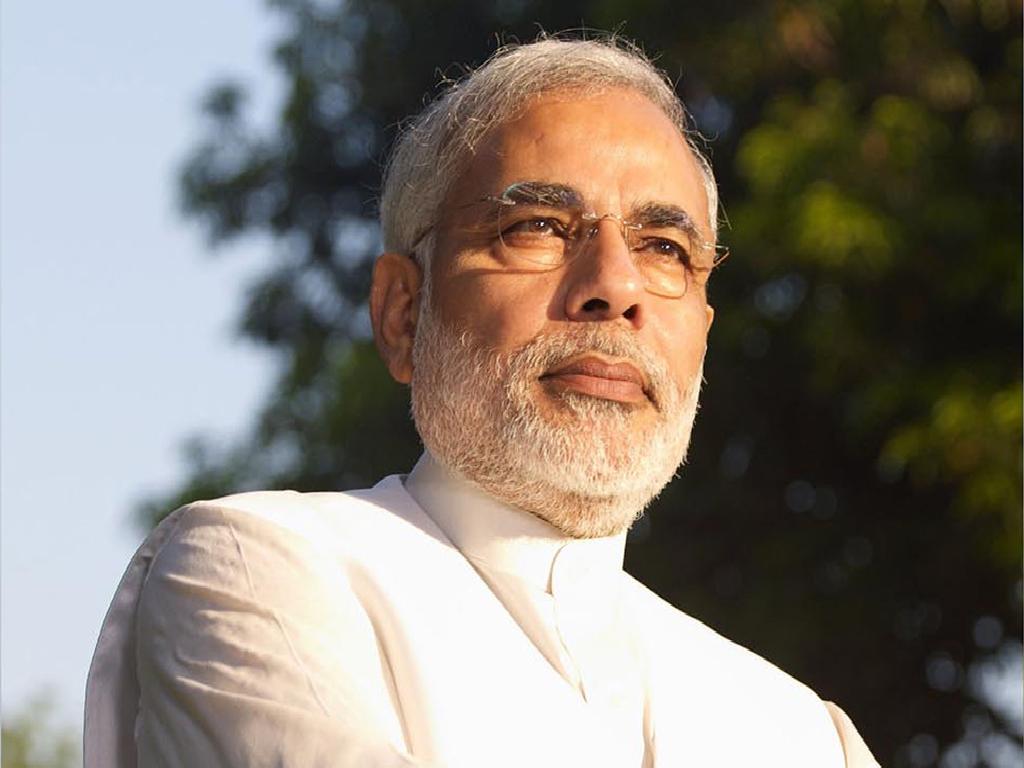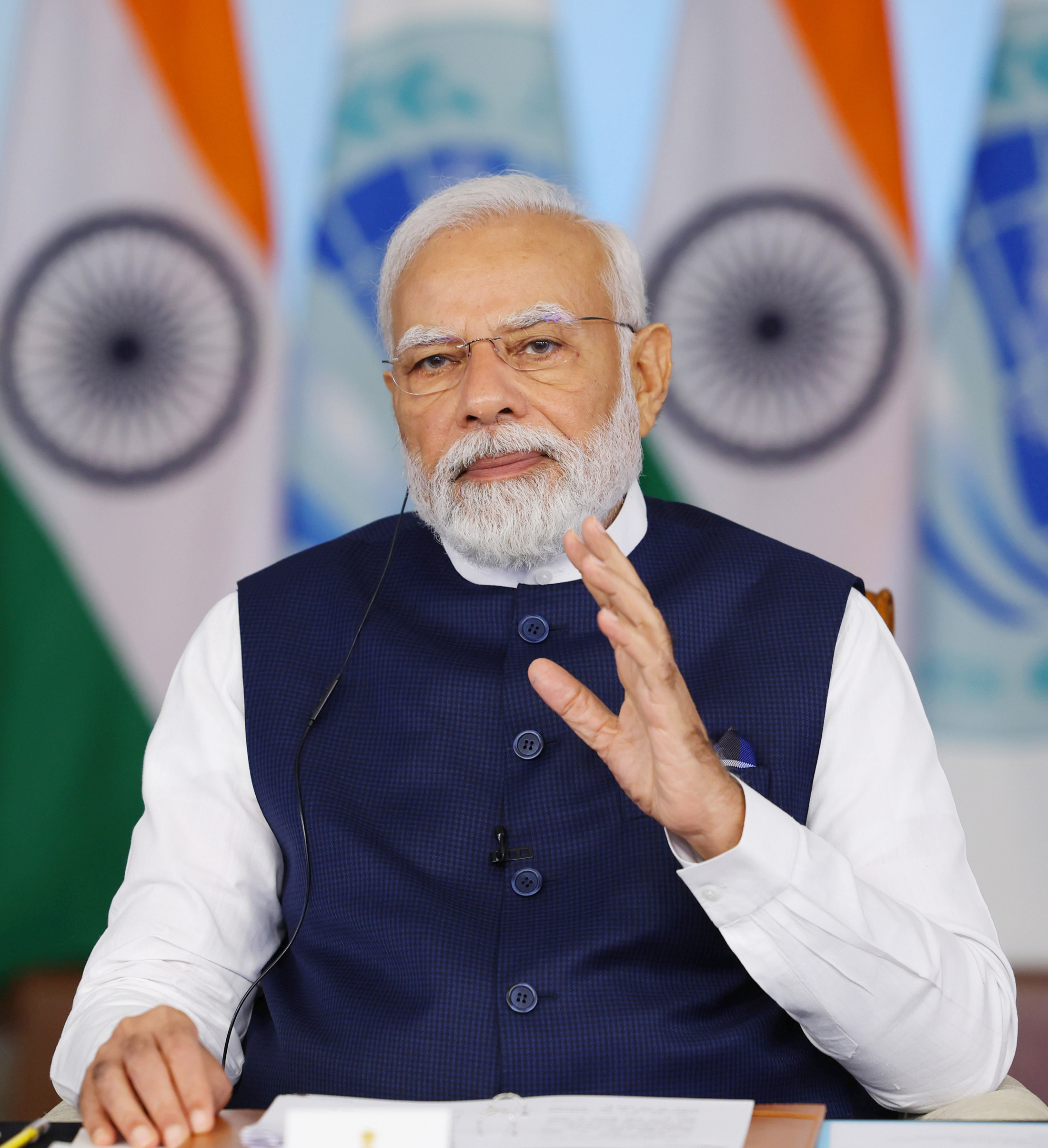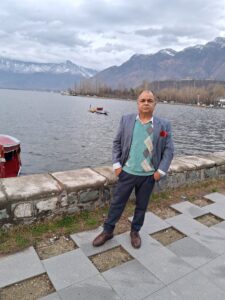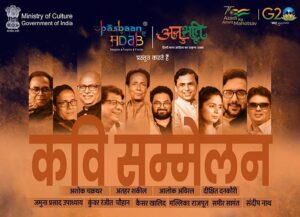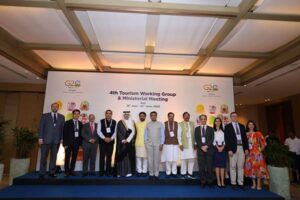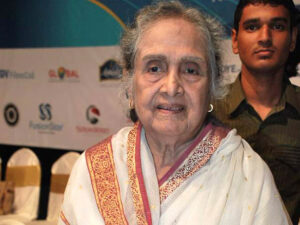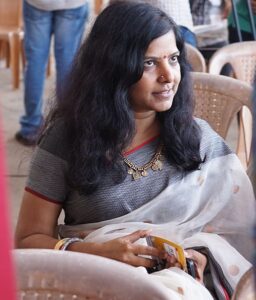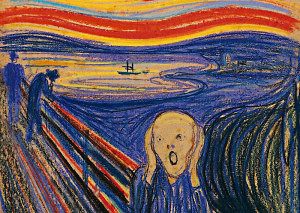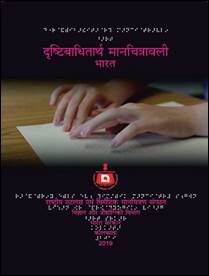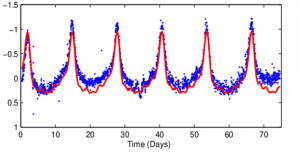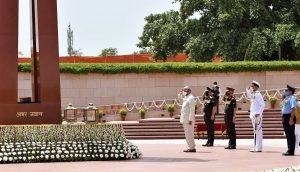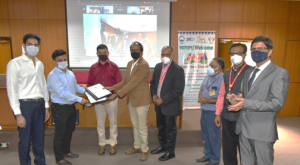The curious case of Dinanath Batra
Ravi Shanker Kapoor | January 13, 2015 9:48 am
What would Prime Minister Narendra Modi do to Dinanath Batra?
An RSS apparatchik heading the Shiksha Bachao Andolan Samiti, Batra has been campaigning against the books that he deems anti-Hindu. He came into the limelight last year when he bullied Penguin India into withdrawing Wendy Doniger’s book, The Hindus: An Alternative History, from India as part of an out-of-court settlement with his outfit. Now, he has intimidated Orient Blackswan, a publishing house, into submission. The publishers have agreed to withhold a book, Communalism and Sexual Violence: Ahmedabad since 1969, by Megha Kumar. The ostensible reason is “pre-release assessment of books.” Batra is also against another book by the same publishers, From Plassey to Partition: A History of Modern India, which was published over a decade ago.
Needless to say, the Batra’s theatrics have elicited the usual reaction—communal, bigoted, intolerant—from the editorialists. There is also a sense of déjà vu: ‘we have always maintained that the victory of Modi would be the triumph of regression.’
Intellectuals are also aghast that Batra wants the textbooks to be rewritten or revised. In a letter to Prime Minister Narendra Modi, he demanded the Vedas and Upanishads to become part of school books. He wants an Amar Chitra Katha-type of textbooks that glorify the history, traditions, culture, and values of India.
Disingenuous liberals
Liberals are right, inasmuch as Batra’s ideas, if implemented, would spell doom for the modern ideas and ideals of liberty, openness, scientific temperament, etc. Yet, they are being selective and disingenuous in their indignation, for they rarely, if ever, objected to the Leftist orientation that was given to the textbooks during Congress rule.
Let’s consider the books prescribed by the National Council of Educational Research & Training (NCERT) and used for decades as standard textbooks. Arjun Dev wrote the two-volume, The Story of Civilization, for class IX and class X. The book was prescribed during the 1970s, 1980s, and 1990s. In the chapter, ‘Socialist Movement and the Russian Revolution,’ he wrote:
The October Revolution had been almost completely peaceful. Only two persons were reported killed in Petrograd on the day the Revolution took place. However, soon after the new state was involved in a civil war. The officers of the army of the fallen Czar organized an armed rebellion against the Soviet state.
Further, regarding the consequences of the Revolution:
The overthrow of autocracy and the destruction of the aristocracy and the power of the Church were the first achievements of the Russian Revolution. The second was the building of the world’s first socialist society. The Czarist empire was transformed into a new state called the Union of Soviet Socialist Republics (USSR). The policies of the new state were directed to the realization of the old socialist ideal, “from each according to his capacity, to each according to his work.”
Private property for production was abolished and the motive of private profit was eliminated from the system of production.
The first task that the new government faced was the building up of a technologically advanced economy. To do this, a new procedure was adopted—economic planning. The industrial development of Europe in the 19th century had taken place as a result of the initiative of individual capitalists. In the USSR, industrialization was undertaken by the state, through the Five Year Plans. Under these plans, the entire resources of the economy were mobilized to attain an accelerated rate of economic development, keeping in view the purposes thereof—social and economic equality. The unprecedented rate of development in the USSR has demonstrated the effectiveness of planning as a means of progress.
The Revolution resulted in the development of a new type of social and economic system in the USSR. By the abolition of private ownership and the profit motive, the existence of classes with mutually opposed interests was ended. Glaring inequalities in society disappeared.
In short, a paradise was created by the communists in a land benighted by the Czarist tyranny! What Dev does not mention are the odious aspects of this supposed heaven. In a typical Leftist fashion of hiding important facts, he blacks out the unprecedented violence unleashed by the Bolsheviks in Russia. The word “Cheka” does not figure anywhere in Dev’s account; the student could not know about a vile secret organization, which was responsible for lakhs of deaths. As a leading historian Paul Johnson wrote in Modern Times, “While the last Tsars had executed an average of seventeen a year (for all crimes), by 1918-19 the Cheka was averaging 1,000 executions a month for political offences alone.” Another historian, an eye-witness, estimated that more than 50,000 death sentences were carried out by the Cheka by the end of 1920.
Lenin’s reign of terror
Further, Lenin added a new dimension to terrorism: the principle on which people were sentenced to death, says Johnson. According to Johnson:
He [Lenin] was ceasing to be interested in what a man did or had done—let alone why he had done it—and was first encouraging, then commanding, his representative apparatus to hunt down people, and destroy them, not on the basis of crimes, real or imaginary, but on the basis of generalizations, hearsay, rumors. First came condemned categories: “prostitutes”, “work-shirkers”, “bagmen”, “speculators”, “hoarders”, all of whom might vaguely be described as criminal. Following quickly, however, came entire occupational groups. The watershed was Lenin’s decree of January 1918 calling on the agencies of the state to “purge the Russian land of all kinds of harmful insects”. This was not a judicial act: it was an invitation to mass murder. Many years later, Alexander Sozhenitsyn listed just a few of the groups who included “former zemstvo members, people in the Cooper movements, homeowners, high-school teachers, parish councils and choirs, priests, monks and nuns, Tolstoyan pacifists, officials of trade unions”—soon to classified as “former people”. Quite quickly the condemned group decree-laws extended to whole classes and the notion of killing people collectively rather than individually was seized upon by the Cheka professionals with enthusiasm.
Some “collectivization” to end “glaring inequalities in society”! But Dev does not see all this. Nor does he see any oppression or repression of the non-Russian nationalities. He continues to fill impressionable minds with dangerous lies. He writes: “On the question of non-Russian nationalities Bolsheviks were the only party with a clear policy. Lenin had described the Russian empire as a ‘prison of nations’ and had declared that no genuine democracy could be established unless all the non-Russian peoples were given equal rights. He had proclaimed the right of all peoples to self-determination, including those under the Russian empire.” So, after the Revolution, “the equality of the nationalities comprising the USSR was given legal form in the constitution drafted in 1923 and later under the 1935 constitution. Equal representation was assured to all the nationalities in one of the two chambers of the USSR legislature. The republics formed by these nationalities were allowed considerable autonomy which facilitated the development of their languages and cultures. These areas were far more backward economically than European Russia, but through planned economic development and the spread of education, they were soon modernized.”
The Encyclopedia Britannica, however, has a different story to tell: “Neither before nor after the Russian Revolution of 1917 were the nationalist aspirations of the Muslims of Central Asia compatible with the interests of the Russian state or those of the European population of the region. This was demonstrated once and for all when the troops of the Tashkent Soviet crushed a short-lived Muslim government established in Kokand in January 1918.” Once good sense dawned on the ruling class in Moscow, and it loosened its stranglehold over the central Asian republics, all of them opted for independence—giving a lie to the assertions of Dev and other Marxist historians. Ditto with the Caucasian and Baltic republics, and the satellite states of the USSR in Eastern Europe.
Downplaying Islamic depredations
Let’s move on to another distinguished historian, Satish Chandra, whose two-volume Medieval India is prescribed by the NCERT for the students of class XI and XII. Satish Chandra and others of his ilk have been comprehensively exposed in Arun Shourie’s Eminent Historians. Shourie has shown how Chandra denigrated Hinduism, reducing it to an abomination called Brahminism, which amounts to the exploitation and oppression of lower caste people. “By contrast,” writes Shourie, “the aggression, the butchery, the devastations committed by Islamic rulers are sanitized through a three-layered filter. First, the devastation is attributed to individuals and not the religion. Among individuals, it is made out that just a few individuals—a few isolated exceptions—indulged in it. Third, that they committed aggression, destroyed temples, pulverized idols, not because of some religious belief but because, being rulers, they had to put down their opponents who happened to be Hindus; and because they were motivated by mundane considerations like greed for the riches of temples, the need to establish political sway over the conquered territory, etc.”
Liberals and Leftists abuse Shourie as a communal, fascist writer—a typical ad hominem trick. However, what he has written is incontrovertible. He has quoted from the accounts of Muslim historians and chroniclers of the medieval period (relying on Sita Ram Goel’s path-breaking Hindu Temples: What Happened to Them); these chroniclers not only faithfully recounted the depredations of Islam but also rejoiced in them. One of the sultans, Firuz Shah Tughlaq, wrote a book in which he boasted of destroying temples. Yet, Chandra insists that the sultans followed a “policy of broad toleration”! In fact, it has been a sustained endeavor of Chandra to negate, ignore, or gloss over the massacres carried out by Muslim rulers—that is, to misinform and mislead the student.
Finally, we examine the case of Bipan Chandra, whose Modern India was prescribed by the NCERT for the students of class XI and class XII. He is the master of equivocation and prevarication; he would cite an exception as a law, and vice-versa. Well, all Leftwing intellectuals do that, but it is only a few who excel in such shenanigans; Bipan Chandra is one of those few. He wrote:
Socialist and Communist groups came into existence in the 1920s. The example of the Russian Revolution had aroused in-terest among many young nationalists. Many of them were dis-satisfied with Gandhian political ideas and programmes and turned to socialist ideology for guidance. M.N. Roy became the first Indian to be elected to the leadership of the Communist In-ternational. In 1924, the government arrested Muzaffar Ahmed and S.A. Dange, accused them of spreading Communist ideas, and tried them along with others in the Kanpur Conspiracy case. In 1925, the Communist Party [of India] came into existence. Moreover, many worker and peasant parties were founded in different parts of the country. These parties and groups propagated Marxist and communist ideas. At the same time, they remained integral parts of the national movement and the National Congress.
Notice in what glowing terms our distinguished historian has described the communists and the grand role socialism played in guiding the national movement. Reading the above passage, one may get the impression that in the 1920s pro-Marxist worker and peasant parties—which remained “integral parts of the national movement and the National Congress”—formed the matrix of the freedom struggle; that the Communist Party was a force to reckon with; that Marxist ideas and ideals played a great and glorious role in the national movement.
Truth about communist influence
However, Saumyendranath Tagore, a leader of the Bengal Workers’ and Peasants Party, went to Moscow in 1927 and told the Comintern leadership that “the actual number of communists in India… did not exceed more than a dozen…” This is also corroborated by J.N. Sahni, a journalist who wrote in his memoirs, The Lid Off, that communists were of no consequence till the British decided to prosecute them in the Meerut Conspiracy case (1929-33). In fact, it was after Mahatma Gandhi expressed his sympathy for communists that people became aware of their existence! It is another matter that the communists were abusing Gandhiji as “the evil pacifist genius”, equating him with Judas. Further, Bipan Chandra does not write a word about the traitorous role played by the communists in 1942, when not merely did they not participate in the Quit India Movement but actually helped the British.
Bipan Chandra does not merely negate and conceal the misdemeanors and misdeeds of communists; when it comes to writing about Muslims, he again indulges in prevarication and evasion. According to him, “in Malabar (northern Kerala), the Moplahs, or Muslim peasants, created a powerful anti-zamindar movement.” Some gloss! A violent, fanatical movement becomes “a powerful anti-zamindar movement”. This is Marxian historiography at its extreme: since the Theory does not recognize any factor other than economic, even Islamic terror is explained in economic terms.
Needless to say, Bipan Chandra is lying on the Moplah massacres; even Mahatma Gandhi, one of the greatest champions of Hindu-Muslim unity, considered Moplah violence a blow to communal harmony.
I can cite myriad examples of the insincerity and mendacity the so-called distinguished scholars whose books have polluted millions of minds. All of them—Romila Thapar, D.N. Jha, Amartya Sen, Rajani Kothari, Prabhat Patnaik, Dipankar Gupta, Jayati Ghosh, Dipankar Gupta, et al—distort truths and spread lies. It is impossible to gauge the damage they have inflicted upon the society, by vending dangerous lies.
Unfortunately, our liberals have never voiced their concern over Leftist propaganda in school and college curriculum. But they are up in arms against Batra. Their duplicity sucks.
Batra is indeed regressive, but he belongs to the committed band of crusaders who valiantly fought against the vile regime of Sonia Gandhi and defeated it. In fact, they helped and enabled Modi demolish the Nehruvian consensus, while the liberals and Leftists were spreading calumny and canards against him. Modi cannot afford to ignore the views of his supporters and comrades, the saffron Knights Templers; the second horn of his dilemma is that accepting Batra’s suggestions would be disastrous for freedom of expression as well as the education system.



